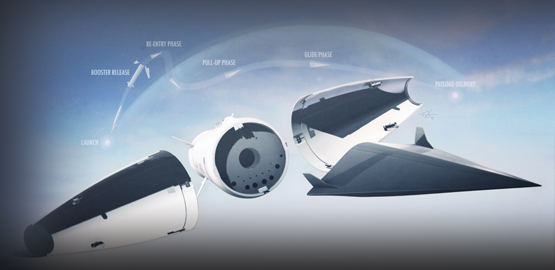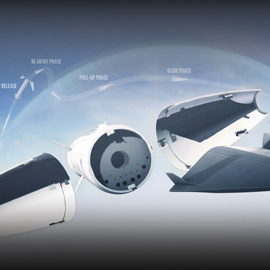News
EB Asks Its Suppliers to Plan for Growth
The $54 billion increase would not be enough for the Navy to increase ship construction all at once, particularly in light of the fact that the Navy and other military services are struggling with readiness issues, said Bryan Clark, a senior fellow with the Center for Strategic and Budgetary Assessments. Addressing readiness is a top priority of Defense Secretary Jim Mattis, so it’s likely that a good portion of any increase in funding for the Navy would go toward that, Clark said. Clark justified the need for 18 more attack submarines, describing how the U.S. faces a very different set of security challenges today given improved military capabilities by Russia and China. There’s a big demand for the intelligence gathering and coordination of special operations forces where the U.S. doesn’t want to have a visible presence, he said. That drives the number of submarines up, Clark said, explaining that four and a half submarines are needed to maintain one submarine deployed overseas when factoring in maintenance, training and the distance that these nuclear-powered submarines travel.
Trump’s Budget Plan Hits Wall of Opposition: Is the Military Buildup in Jeopardy?
“This is a pretty complicated political landscape,” says Katherine Blakeley, budget analyst and research fellow at the Center for Strategic and Budgetary Assessments. What will be telling is how different factions posture for the fight. Blakeley does not see many favorable scenarios for Trump to get what he wants. “Republicans have a fairly thin Senate majority. The House is ideologically divided. And the deficit hawks are newly emboldened by the appointment of [former tea party congressman] OMB director Mulvaney.”
Marines, Japanese Infantry Conduct Maneuvers With Eye on China
Toshi Yoshihara, senior fellow at the Center for Strategic and Budgetary Assessments think tank and widely considered one of the globe’s top naval strategists, said Iron Fist “is not just about island disputes” but also Tokyo’s fears of China’s growing maritime power and how Beijing sees Japan’s 700-mile long archipelago of islands that enclose the East China Sea and stretch to Taiwan. “To Chinese eyes, these islands are symbolic and physical obstacles to China's freedom of maneuver at sea,” Yoshihara said. “Chinese mariners, both commercial and military in nature, must pass through the choke-points formed by these islands to reach the open waters of the Pacific Ocean. That these islands are administered by Japan does not sit comfortably with the Chinese. Indeed, it adds to a sense of claustrophobia among Chinese strategists. “Chinese naval flotillas pass through the narrow seas formed by the Southwest Islands with increasing frequency and regularity. Tellingly, Chinese media often describe these passages as a demonstration of China's ability to ‘break through’ the island chain.”
McCain Argues Navy Should Open Up Competition For New Frigate Design
McCain was speaking at the roll-out of a new report, "Restoring American Seapower: A New Fleet Architecture for the United States Navy," by the Center for Strategic and Budgetary Assessments. The report was one of three commissioned by Congress to study new capabilities and organizational plans for the Navy's future fleet. The CSBA report specifically advocates for truncating the LCS program as soon as possible and building a larger guided missile frigate, similar to what McCain supports. The study also calls for building 71 frigates; the frigate, like the LCS, falls into the small surface combatant family of ships. The Navy currently has a requirement for just 52 small surface combatants, according to the service's 2016 Force Structure Assessment.
Former Navy Undersecretary: Trump’s $54 Billion Defense Proposal Not Enough for Naval Buildup
Bryan Clark, a senior fellow at the Center for Strategic and Budgetary Assessments, said the United States's overuse of its shrinking Navy has caused serious backlogs in needed maintenance. For the past two decades, the United States has deployed 100 ships continuously at sea, despite a smaller fleet. As a result, the Navy has been forced to deploy ships more frequently and for longer periods of time. In 1998, only 4 percent of ship deployments lasted longer than six months. Today, every single deployment is longer than six months. Clark said this has caused many of the Navy's ships to skip maintenance, compounding problems the service faces today. "The reason we've been unable to do the maintenance is because everybody's out there getting deployed," Clark said at the Hudson Institute. "We need to keep ships in port, we need to get the F-18s back into the depots." The administration has not yet detailed what types of ships would be added to the fleet in the proposed expansion. Clark said the Navy has requested additional submarines, surface ships, and amphibious ships.
How Trump Should Spend That Extra $54 Billion on Defense
Here’s the truth: The Trump administration measured its $54 billion increase against budget caps put in place by the 2011 Budget Control Act. But the Obama administration routinely spent above those caps, and it accounted for a large portion of that $54 billion in its last budget projection. “Just to keep what you have now, $35.5 billion are already spoken for,” says Katherine Blakeley, a research fellow at the Center for Strategic and Budgetary Assessments.



















